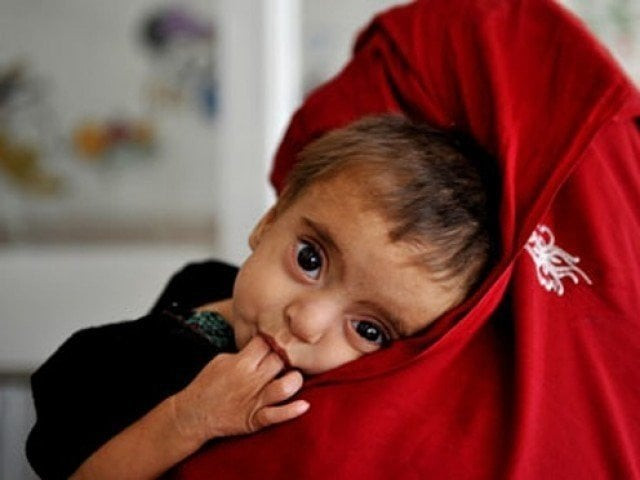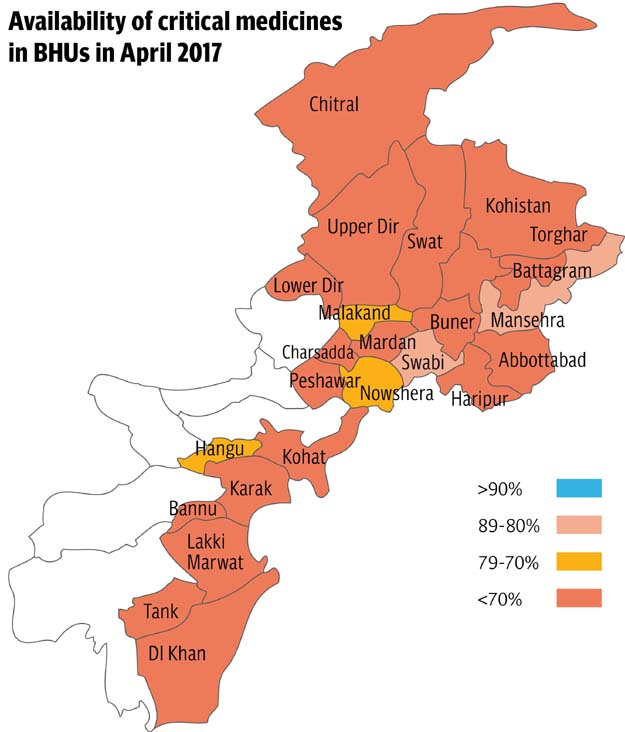Most K-P health centres lack sufficient medicine stocks
RHCs receive slightly more money than BHUs which remain open for six hours

RHCs receive slightly more money than BHUs which remain open for six hours. PHOTO: REUTERS
However, the provincial budget, which was unveiled on Wednesday, offers an opportunity to resolve this issue.
Around 760 Basic Health Units (BHUs) and 96 Rural Health Centers (RHCs) across the province offer healthcare services to the people. However, stocks of lifesaving medicine continue to lag at 60 per cent.
In the budget, the provincial government has allocated Rs51.971billion for the health ministry for the upcoming fiscal year 2017-18.
On the other hand, around Rs13.78 billion have been set aside for district health offices – underlining a longstanding focus on tertiary care facilities over primary health centres whose infrastructure collapsed, thereby increasing the disease burden on major hospitals.
The Pakistan Tehreek-e-Insaf (PTI) led provincial government had sought to improve service delivery in primary health care facilities, allocating additional resources and developing a robust independent monitoring system to take immediate remedial actions.
To ensure adequate stocks of medicines in primary health care facilities, the health department took a number of steps such as negotiating a central contracting rate for medicines periodically, a move which proved to be cost effective.
Moreover, the health department hired logistics officers in each district to manage affairs at the district level and to ensure that the procurement process is completed in time.
However, an inadequate budget for medicines at facilities run by district governments and untimely release of funds continues to hamper the availability of lifesaving medicines. While the issue of inadequate budget allocation varies across K-P, it is mostly concentrated at RHCs where, on average, districts allocate around Rs475,000 for each centre, official documents show.
RHCs provide around the clock services to a large population.
By comparison, a BHU - which receives Rs450,000 - operates for six hours a day.

Further, money for medicines at RHCs varies from Rs2 million per clinic in Hangu to Rs0.1 million per clinic in Shangla.
The minimum amount for each RHC must be Rs0.93 million. But only three districts in the province meet this minimum criterion including Hangu, Abbottabad and DI Khan.
To meet the gap, the government would have to allocate an additional Rs44 million for 96 clinics in the 22 districts
However, even if the government allocates sufficient budget, the untimely release of these funds could still hamper the utilisation of the budget to purchase medicines for facilities, a source in the health ministry said.
If the district government releases the medicine budget as a single tranche to district health department in August, districts can then place orders on time and ensure the timely utilisation of the medicine budget, he added.
Meanwhile, health experts have stated that since all 1,600 health facilities across the province had sufficient doctors, nurses, paramedics and technicians, medicines in sufficient quantity should be supplied to these centres on a priority basis.
Published in The Express Tribune, June 9th, 2017.













COMMENTS
Comments are moderated and generally will be posted if they are on-topic and not abusive.
For more information, please see our Comments FAQ